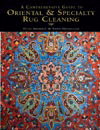The Trusted Sales Advisor
Carpet Fibers: Soft to Hard and Back

In the past year or so I’ve been inundated with emails from readers (mostly retailers) who are now fielding problems from the installation of carpet with the new softer yarns that are flooding the market these days.
As I retailer myself I, too, have had these calls from customers who say, “My carpet is flattening out.” Well I’m sorry to break the news to you and the fiber companies/mills that make and sell soft yarns: They’re supposed to flatten.
The word soft in my book means poor resiliency. But don’t get these terms confused because a yarn that lays down and can be brushed or vacuumed back up is not matting, crushing or wear.
Matting and crushing are when the carpet pile has been compacted down (normally in high traffic areas) and cannot be brushed back up. This is either a permanent loss of resiliency or the poly (plastic) fibers have been fused together.
Then we get to the most oversold, deceptive word used to sell carpet to date: Wear. Our buyers think that flattening of carpet fiber is wear. It is not.
My simplified way to explain wear to my buyers is, “Wear can be looked at as a loss of mass similar to sandpaper to wood. Today’s fibers are mainly plastics, like nylon, polyester and polypropylene. The manufacturers give us these great on average 10-year wear warranties for 10% wear loss. Well plastic carpet can’t wear down 10% in the average home. The things that are not covered in a wear warranty are matting, crushing and soft fiber lay down.”
We all should know that warranties are simply a poor and deceptive way to sell most products—especially flooring. I can honestly say I have never flipped a carpet sample over to show the warranties on the back in order to help me sell that product. What I can say is I’ve taught every one of my buyers who were interested enough to learn how to look for quality structure in carpet.
Fiber History
To understand the problems that face our retail and commercial carpet buyers we need to look at the history of fiber. Just remember every good and bad product that has hit the market is driven by the demand of the buying public.
Fiber companies, carpet mills, retail and commercial sales companies are all like Congress—they go with the money. This means we leap into new products and ideas for profit then we figure out by trial and error if we have sold the right product. Well, our flooring and fiber history is much the same.
Entrepreneurs, manufacturers and scientists have done some fantastic and terrible things in broadloom/fiber inventions over the past centuries. But you might notice that we have bounced back and forth between soft and hard fibers over time. When Eli Whitney invented the cotton gin, he created such a fast production method for manufacturing soft cotton based textiles that growing cotton made Southern farmers wealthy land and slave owners.
The want for soft textiles was so big that flooring textiles soon followed with inventions that transformed old textile machinery to carpet making equipment. So soft cotton broadloom became the rage. But it had its drawbacks because, like I said, soft means poor resiliency. But the luxury of the flooring overcame its drawbacks because, again, the buying public asked for more.
Then in the early to mid 1900s chemists learned plastics (polys) that were being used to make products for war, such as parachutes, flack jackets and tents, could be used in the tufting of carpets. One of those fibers was 501 nylon, which is where the old phrase, “That sucker wore like iron,” came from.
So now we had tough, resilient fiber that when structured well wore like no other manmade fiber ever had. But guess what? It felt hard. Again the public put up with it because the long-wearing fiber performed so well.
Next we tried polyesters because it was not only a cheaper raw material, it was more resistant to staining. And, guess what? It felt soft.
Then some genius capitalized on polyester’s soft, thick appeal and took it a step further and made the worst structured carpet ever made. You guessed it: Shag.
Shag yarns were tall, fat-plied yarns with little to no twist. So having no resiliency, shag would lay so flat that a rake was needed to make the pile stand back up. And, again, some of the buying public overlooked the lay-down effect for the thick, soft appeal. But there were many consumers who did not, and the retailers at the time took the hit with buyers of polyester shags who wanted their money back. So, needless to say retailers went back to what I call, “good old hard nylons.”
That was until recent times when manufactures started to reintroduce polyester (PET). This time they gave most of the carpets a better twist and structured them so this new soft fiber would bounce back better than earlier days.
Again, the buying public responded so much that nylon producers started to lose big in market share. So, you guessed it, the nylon guys figured the money was in soft. Thus, soft nylons are now the new rage. They cost more, they have great soft foot (or hand) appeal and they lie down and look flat in all traffic areas.
So, once again we created our own mess because we follow the profit. But like other trial products, the carpet manufacturers quickly learned how to avoid fiber lay down responsibility. Put simply, the wording in the basically useless warranties don’t cover this issue.
My advice to you retailers who are stuck with this soft fiber demand created in the flooring industry is, if you must sell soft fibers, you have to be blunt with your customers with what will happen in the future. Explain to them that soft yarns will lay down until they are brushed back up. That is the negative to that wonderful soft positive. Then write it on your contract and have them sign it.
Thanks for reading.
Looking for a reprint of this article?
From high-res PDFs to custom plaques, order your copy today!








.jpg?t=1690771780)

